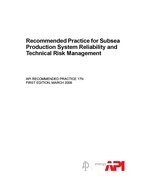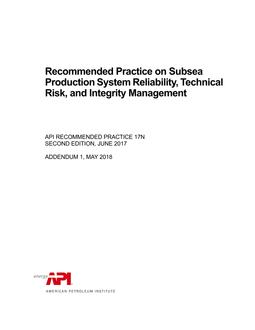Click here to purchase
This recommended practice (RP) provides a structured approach which organizations can adopt to manage this uncertainty throughout the life of a project. This may range from the management of general project risk through to the identification and removal of potential failure modes in particular equipment.
This RP aims to provide operators, contractors and suppliers with guidance in the application of reliability techniques to subsea projects within thier scope of work and supply only. It is applicable to: standard and non standard equipment; and all phases of projects from feasibility studies to operation.
This RP does not prescribe the use of any specific equipment or limit the use of any existing installed equipment or indeed recommend any action, beyond good engineering practice, where current reliability is judged to be acceptable. It is also not intended to replace individual company processes, procedures, document nomenclature or numbering; it is a guide. However this recommended practice may be used toenhance exisiting processes, if deemed appropriate.
Most organizations will find much that is familiar and recognized as good practice. Some sections of the annex may only be of interest to the reliability specialist. The basic approach however, is simple and consistent and when applied correctly has the potential to greatly reduce the financial risk of designing, manufacturing, installing and operating subsea equipment.
Product Details
- Edition:
- 1st
- Published:
- 03/01/2009
- Number of Pages:
- 99
- File Size:
- 1 file , 800 KB
- Product Code(s):
- G17N01, G17N01, G17N01
- Note:
- This product is unavailable in Cuba, Iran, North Korea, Syria

